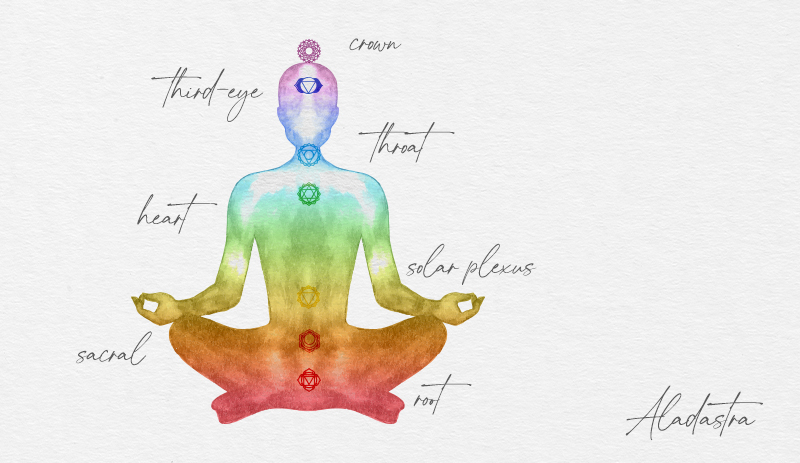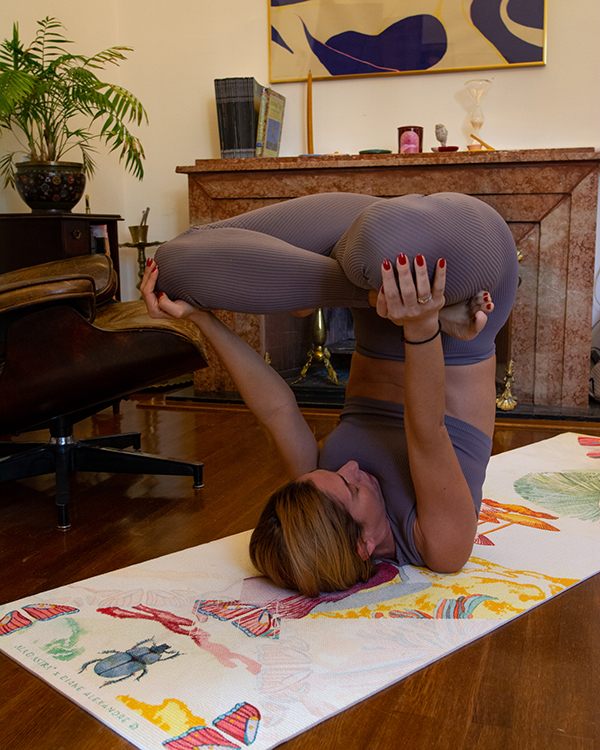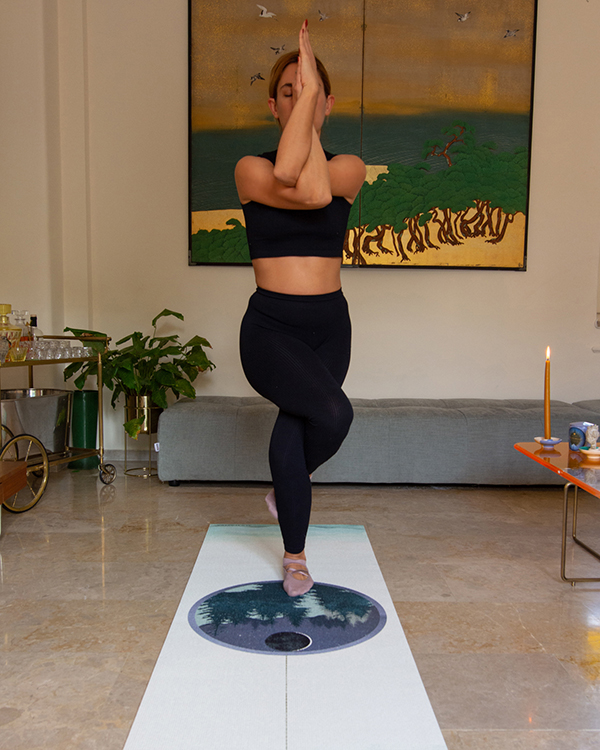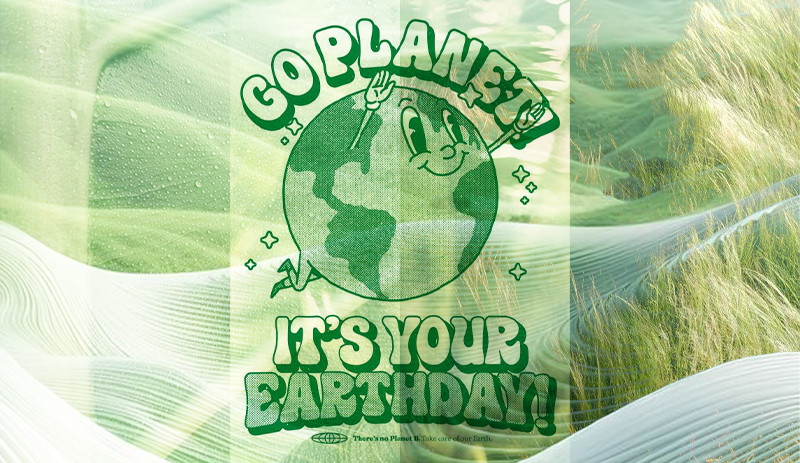Chakra means “wheel” in Sanskrit;
These “wheels” were thought of as spinning vortexes of energy.
Traditionally, Indians saw the body as containing seven main Chakras, arranged vertically from the base of the spine to the top of the head. These 7 energy center correspond to bundles of nerves, major organs, and areas of our energetic body that affect our emotional and physical well-being.
Due to past pain, stress, longheld tension, internalized depression, and many more external and internal situations, the Chakra system may be blocked or imbalanced. Through many situational challenges in our lives, a Chakra can get deficient, meaning that it can neither receive nor manifest the appropriate energy. But, it can also become excessive, that is overloaded, and cannot operate normally, concluding to dominate our life.
Additionaly, each Chakra correspond to a specific name, number, color, area of the spine from the sacrum to the crown of the head and health focus. Therefore, by creating the appropriate setting and practicing specific Asanas that correspond to each Chakra, we can release blocks and bring the Chakra sytem back in harmony.

The Physical Chakras:
First Chakra: Muladhara Chakra aka Root Chakra
Located at the base of our spine, in the tailbone area.
Associated with the color Red.
The Chakra of grounding, stability, security and physical identity.
When open, we feel safe and fearless. If blocked, we may feel fear or aggression.
Virabhadrasana I aka Warrior I is a groundin pose that helps activate the Root Chakra.
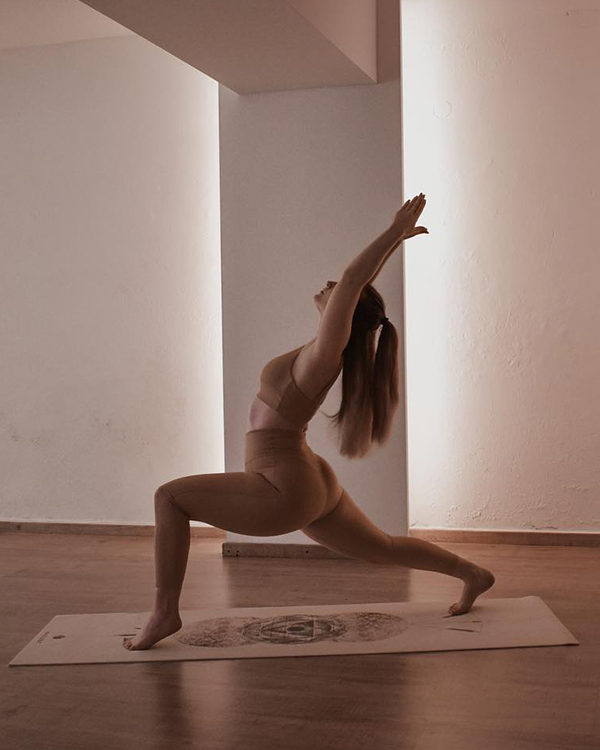
Second Chakra: Svadhisthana Chakra aka Sacral Chakra
Located just below the belly button and just above the pubic bone.
Associated with the color Orange.
The Chakra of pleasure, sexuality, emotion and creativity.
When open, we feel creative, connected to our relationships, self-worthy, open to new people and experiences. If blocked, we may feel unworthy, guilty, we may have sexual imbalances, lower back pains.
Eka Pada Rajakapotasana aka one legged King Pigeon pose opens the hips where most of our traumas are stored. It helps release negative emotions and open the Sacral Chakra.
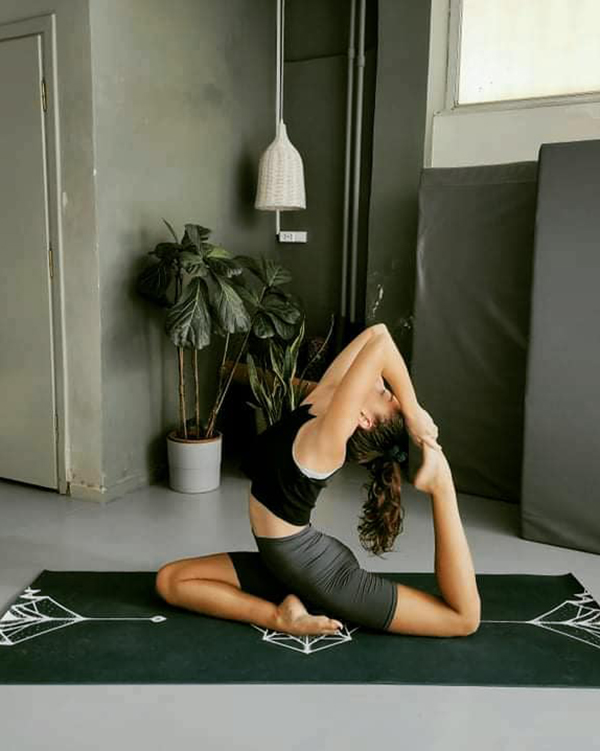
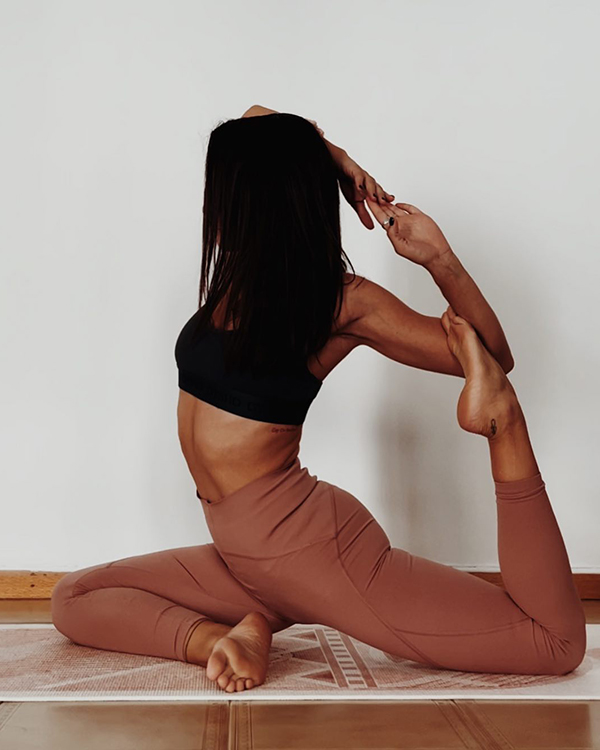
Third Chakra: Manipura Chakra aka Solar Plexus Chakra
Located from the navel to the breastbone.
Associated with the color Yellow.
The Chakra of self-esteem, willpower and confidence.
When open, it’s a source of personal power. If blocked, we may have low self-esteem or issues in the digestive system.
Also, its name means lustrous gem.
Parivrtta Trikonasana aka Revolved Triangle Pose facilitates movement in the abdominal organs, helping digestion, improves balance and flexibility and targets the Solar Plexus Chakra.

Fourth Chakra: Anahata Chakra aka Heart Chakra
Located at the center on the chest, just above the heart.
Associated with the color Green.
The Chakra of love and compassion.
When the energy of Anahata is flowing up towards consciousness, one acts in Bhakti, pure divine love. If blocked, we may feel isolated, lonely, insecure or create our own detriment by focusing on others. We may also manifest, heart problems.
In addition, Anahata is represented by a lotus with 12 petals; representing bliss, peace, harmony, love, understanding, empathy, clarity, purity, unity, compassion, kindness and forgiveness.
Chakrasana aka Wheel pose opens the Heart Chakra. It strengthens the whole body, stretches the internal organs and relieves tension and stress. As it literally means wheel, it imitates the spinnig wheels of Chakra energy. You should always follow up with a forward bending asana to counter the deep spinal stretch.
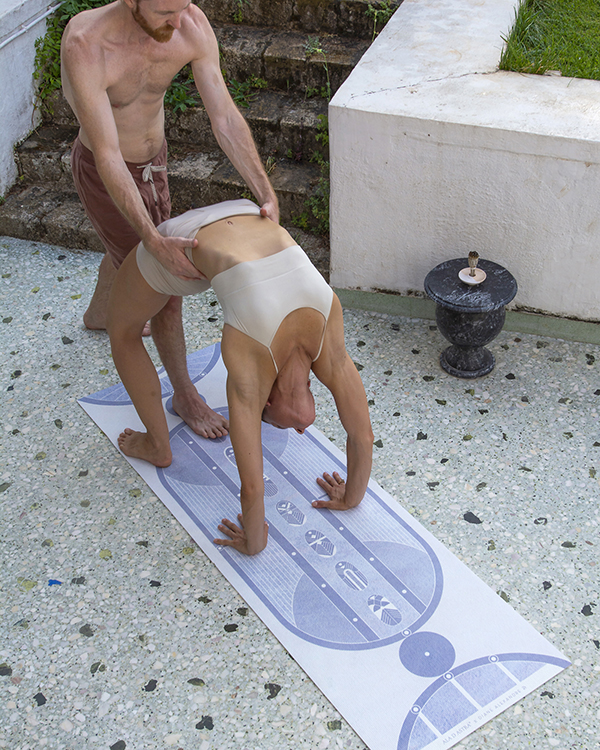
The Anahata Chakra is the connection between matter and spirit. Located in the “heart center”, it is the crossing point between the lower 3 Chakras and the higher 3.
The Chakras of Spirit:
Fifth Chakra: Vishuddhi Chakra aka Throat Chakra
Located area of the throat.
Associated with the color Blue.
The Chakra of communication, verbal expression.
When open, we speak and listen with compassion or feel confident to speak our truth. If blocked, we may have voice and throat problems. We may have trouble speaking our mind or speak without thinking.
Padma Sarvangasana aka Shoulder Stand Lotus pose opens up the Throat Chakra as it stimulates circulation, breath and thyroid gland. It stretches the pelvic region and internal organs.
Sixth Chakra: Ajna Chakra aka Third Eye Chakra
Located between the eyebrows on the forehead.
Associated with the color Indigo.
The Chakra of intuition, imagination and wisdom.
When open, we can connect to cosmic knowledge and universal consciousness. We may be able to see the big picture and follow our intuition. If blocked, we may have trouble “listening” to reality, headaches or issues with sight and concentration.
Garudasana aka Eagle pose balances the lunar and solar energies within the Third Eye Chakra, enhancing balance, concentration and insight. Garuda is generally translated to “eagle” but it actually alludes to a mythical bird called the “king of the birds” that carries the god Vishnu through the sky, constantly riding the wind and never gets tired.
Seventh Chakra: Sahasrara aka Crown Chakra
Located at the very top of the head.
Associated with the color Violet or White.
The Chakra of divine intelligence, pure bliss, enlightenment and spiritual connection.
When open, Sahasrara is the essence of being, the center for inspiration, happiness, deeper connection with the universe, and a connection to a force bigger than ourrselves. If blocked, we may be skeptical or stubborn.
The Crown Chakra is linked to every other Chakra in this system, therefore affects not just the brain and nervous system but all every organ in the Chakra system.
Salamba Sirsasana aka Supported Headstand pose or Salamba Sirsasana Pada Garudasana aka Supported Headstand Eagle Legs pose are inversions that open the Crown Chakra, stimulate the pituitary and pineal glands and elevate the mood. Headstands strengthen the spine and stimulate the nervous system. The brain calms, stress is reduced and mental concentration improves.
Don’t forget that Yoga is more than just asanas and exrcise. Yoga has an internal aspect that you need to work on as well. Look inside and evolve.
If you’re not working in, you’re just working out.
Stay tuned for more,
